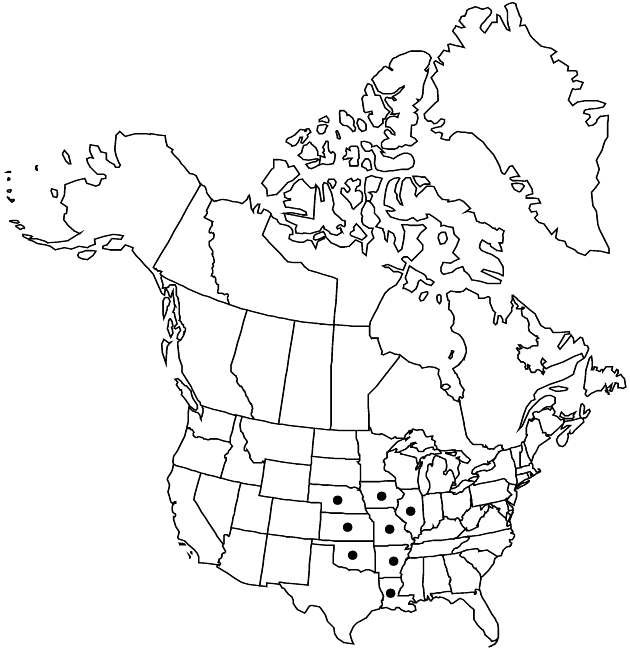Symphyotrichum turbinellum
Phytologia 77: 293. 1995.
Perennials, 30–100 cm, cespitose; with thick, branched, woody caudices. Stems 1–5+, erect, straight (stout, brittle), glabrous or sparsely hirtellous in lines. Leaves (paler green or bluish green abaxially) firm, margins scabrous, apices mucronate, faces glabrous, abaxial raised midribs scabrous to glabrate; basal withering by flowering, subpetiolate to shortly petiolate (petioles winged, sheathing, coarsely ciliate), blades oblanceolate to oblong-oblanceolate, 45–65 × 5–8 mm, bases cuneate, margins shallowly crenate, strigoso-ciliate, apices acute, obtuse or rounded; proximal cauline withering by flowering, subpetiolate or sessile, blades elliptic-lanceolate to linear-oblanceolate or lanceolate, 40–120 × 5–20 mm, reduced distally, bases cuneate to slightly attenuate or rounded, slightly clasping, margins serrulate-crenate or entire, apices acute to acuminate; distal sessile, blades oblanceolate or elliptic-lanceolate to linear-lanceolate or linear-oblong, (10–) 15–100 × 1–5 mm, gradually reduced distally (more strongly so on branches), bases cuneate or rounded, margins entire, apices acuminate. Heads in open, broad, much ramified, paniculiform arrays, branches ascending to arching, thin, brittle, remotely leafy, rarely sessile. Peduncles long, thin, (1–) 4–10 (–25) cm, branches to 10 cm, bracts 8–15, regularly spaced but becoming crowded distally, appressed or ascending, linear-oblong to subulate, 1.5–4 mm, grading into phyllaries, mucronulate. Involucres turbinate to cylindro-campanulate, 7–12 mm. Phyllaries in 6–9 series, appressed or ± spreading, shortly oblong-lanceolate to subulate (outer) to linear-oblong or linear (inner), strongly unequal, bases indurate 1/2–5/6, abaxially rounded, margins scarious, erose, hyaline, sparsely ciliolate distally, green zones oblanceolate to rhombic-oblanceolate, in distal 1/6–1/2, apices acute (outer) to obtuse or rounded (inner), often callous-mucronulate, faces glabrous. Ray-florets 14–20; corollas light blue to lavender or purple, laminae 12–20 × (1–) 1.5–2.8 mm. Disc-florets 15–20+; corollas yellow turning purple, (4.5–) 5–7 mm, tubes slightly shorter than narrowly funnelform throats, lobes triangular, 0.5–1 mm. Cypselae yellow-tan or light-brown to gray, obovoid, ± compressed, (1.8–) 2–2.8 mm, 2–4-nerved, faces minutely strigillose; pappi whitish to reddish-brown, 4.5–6.4 mm. 2n = 96.
Phenology: Flowering Aug–Oct.
Habitat: Open, dry, acidic (chert, sandstone, or granite), rocky or loamy soils, woods and glades on upland slopes and ridges in soils associated with or on leached soils above bluffs, pastures, roadsides
Elevation: 60–900 m
Distribution

Ark., Ill., Iowa, Kans., La., Mo., Nebr., Okla.
Discussion
Symphyotrichum turbinellum is mostly Ozarkian.
Selected References
None.
Lower Taxa
"thin" is not a number."thin" is not a number.